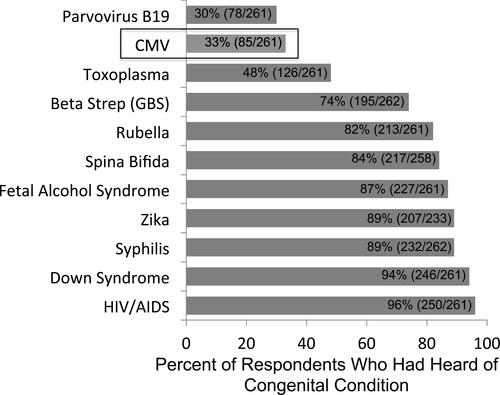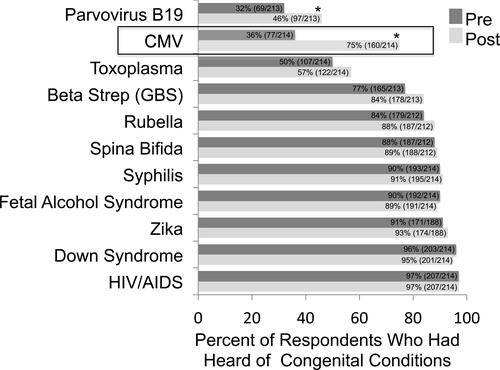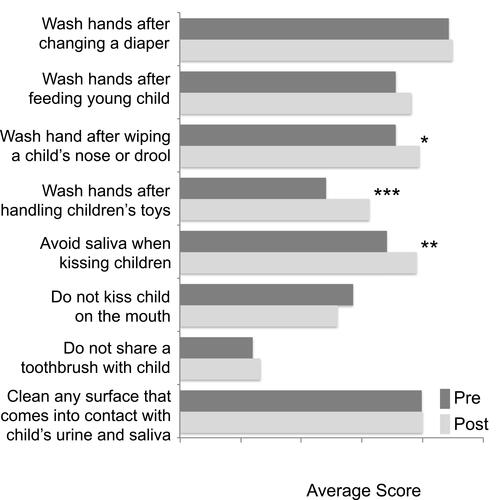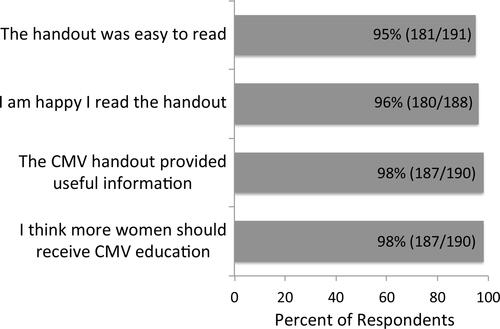Figures & data
Box 1 Recommended Hygiene Practices to Prevent CMV Infection
Table 1 Baseline Characteristics of Study Participants
Figure 1 Baseline knowledge of CMV is low compared to other congenital conditions. Respondents were asked to respond either yes or no if they had heard of each congenital condition. The percent that responded “yes” is shown.

Figure 2 Education about CMV infection provided during prenatal clinic visits increased knowledge of CMV infection is shown. Percent of respondents that indicated they had heard of CMV compared to other congenital infections before and after CMV education provided during prenatal clinic visits. The CMV educational handout was designed by the study authors and was given to respondents after they had completed the pre-handout questionnaire. *p-value <0.001, McNamar’s test.

Figure 3 The recommendations for increased hygiene practices were well-received by respondents. Respondents were asked to rank how they felt about each hygiene recommendation on a scale of 1–5. A rank of 1 indicated “I felt the recommendation was very difficult to do and I could not do it”, a rank of 3 indicated “I felt neutral about the recommendation” and a rank of 5 indicated “I felt the recommendation was easy to do and I was able to do it”. The rank for each recommendation from the respondents was averaged and a favorability score was generated.

Figure 4 Respondents increased hand hygiene practices after CMV education. Respondents were asked to rank on a scale of 1–5 how often they do hand hygiene at home. A rank of 1 indicated “I do not do that”, a rank of 3 indicated “I do that half of the time” and a rank of 5 indicated “I do that all the time”. The rank for each recommendation from the respondents was averaged and an average score was generated. *p= 0.01, **p=0.007, ***p= <0.001, Paired t-test.

Figure 5 CMV education was well received by the respondents. The respondents were asked to respond either yes or no to questions regarding how they viewed the CMV education. These questions were asked on the post-handout questionnaire.

